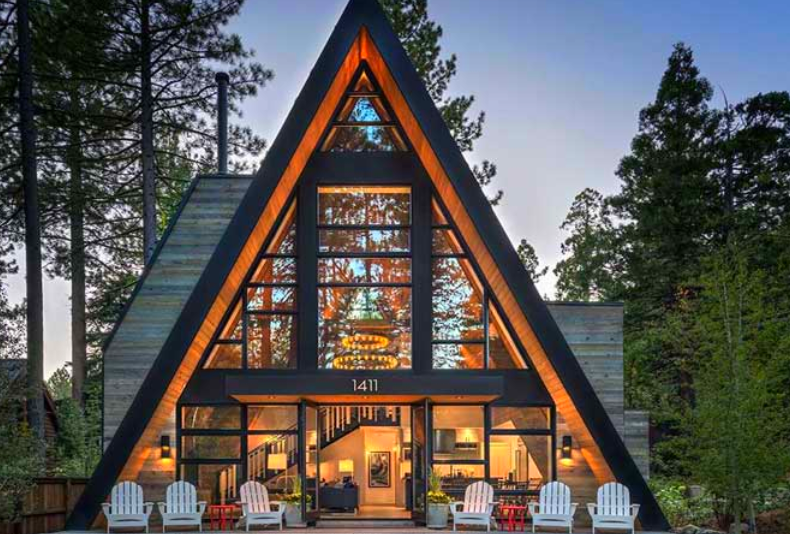
-
Bungalow House: An Eco-Friendly, Comfortable, and Stylish Lifestyle
Bungalow houses are accommodations that embrace a simple and unique architectural style with origins in tropical regions. Typically single-story with broad, sloping roofs, these houses reflect a philosophy of harmonizing with nature while providing guests with a comfortable and cozy atmosphere.
History of Bungalow Houses:
The word "bungalow" is derived from the Hindi word "bangla," which refers to simple, single-story houses made of bamboo and thatch found in Bangladesh and India. This house type encountered by British colonialists in India and other tropical regions in the late 19th century was transported to Europe and became particularly popular in England. In the early 20th century, it spread in the United States, especially in warm climate regions like California and Florida.
Features of Bungalow Houses:
Bungalow houses stand out with their simple and functional designs, harmony with nature, and comfortable atmosphere. Here are the key features of bungalow houses:
Single-Story Structure: They are generally constructed as single-story buildings, making them easily accessible for the elderly, disabled, and young children.
Spacious and Sloping Roofs: Broad and sloping roofs facilitate rainwater drainage and keep the interior cool. Additionally, the ample space beneath the roof can be used for storage or additional living areas.
Open Plan Layout: Bungalow house interiors typically feature an open-plan layout. This integrates living spaces, kitchen, and dining areas, creating a spacious and bright atmosphere.
Large Porches and Terraces: Expansive porches and terraces are ideal for enjoying nature and creating outdoor living spaces.
Natural Materials: Traditional bungalow houses are often made from natural materials such as bamboo, wood, and thatch. These materials are preferred for their visual appeal and eco-friendliness.
Abundant Windows: Bungalow houses feature plenty of windows, allowing natural light to enter and making the interiors bright and airy.
Airflow: Bungalow houses have well-ventilated structures. Large windows and an open-plan layout facilitate natural air circulation indoors.
How to Build a Bungalow House?
Building a bungalow house is a task that requires special skills. However, with proper planning and resources, you can construct your own bungalow house. Here are the basic steps:
Planning:
Project Design: Work with an architect or designer to prepare a project suitable for your bungalow house. Consider your desired features, space requirements, and budget.
Site Selection: Determine the location for building your bungalow house. Consider construction permits, building regulations, and environmental factors.
Material Selection: Choose suitable materials for your bungalow house. If you prefer natural materials, you can use bamboo, wood, and thatch. Modern materials like concrete, brick, and steel are also options.
Budget: Calculate construction costs, including material costs, labor fees, permits, and other expenses.
Construction:
Foundation Construction: The foundation of your bungalow house should be sturdy and durable. It is recommended to use reinforced concrete foundations.
Roof Construction: Build the broad and sloping roof using wooden beams and roofing materials.
Wall Construction: Construct the walls using materials such as wood, stone, brick, or concrete.
Windows and Doors: Install windows and doors. Energy-efficient windows and doors are recommended.
Interior Layout: Arrange the interior of your bungalow house. If you prefer an open-plan layout, integrate living areas, kitchen, and dining area.
Exterior Landscaping: Arrange your porch and terrace. You can create gardens, pools, or other outdoor living spaces.
Advantages of Bungalow Houses:
Harmony with Nature: They offer a natural lifestyle with the use of natural materials and open-plan layouts.
Comfortable and Spacious Environment: Open spaces, large windows, and high ceilings create a comfortable and spacious atmosphere.
Low Maintenance Cost: Due to their small and simple structures, maintenance costs are generally low.
Flexible Design: They can be adapted to various needs and tastes.
Affordable Construction: Traditional bungalows are cost-effective due to the affordability of materials and simple design.
Disadvantages of Bungalow Houses:
Small Space: Due to their small size, they may be insufficient for large families.
Sensitivity to Climate Conditions: Some types of bungalows may be vulnerable to harsh weather conditions.
Privacy Issues: The open-plan layout may lead to privacy concerns.
Limited Insulation: Thin walls may result in poor insulation.
Bungalow houses are an ideal option for those seeking an eco-friendly, comfortable, and stylish lifestyle. Their simple design, spaciousness, and harmony with nature have made them popular in modern architecture. Whether you choose to build your own bungalow house or purchase a ready-made one, it's important to carefully follow the planning and construction steps outlined above and consider the advantages and disadvantages of bungalow houses.